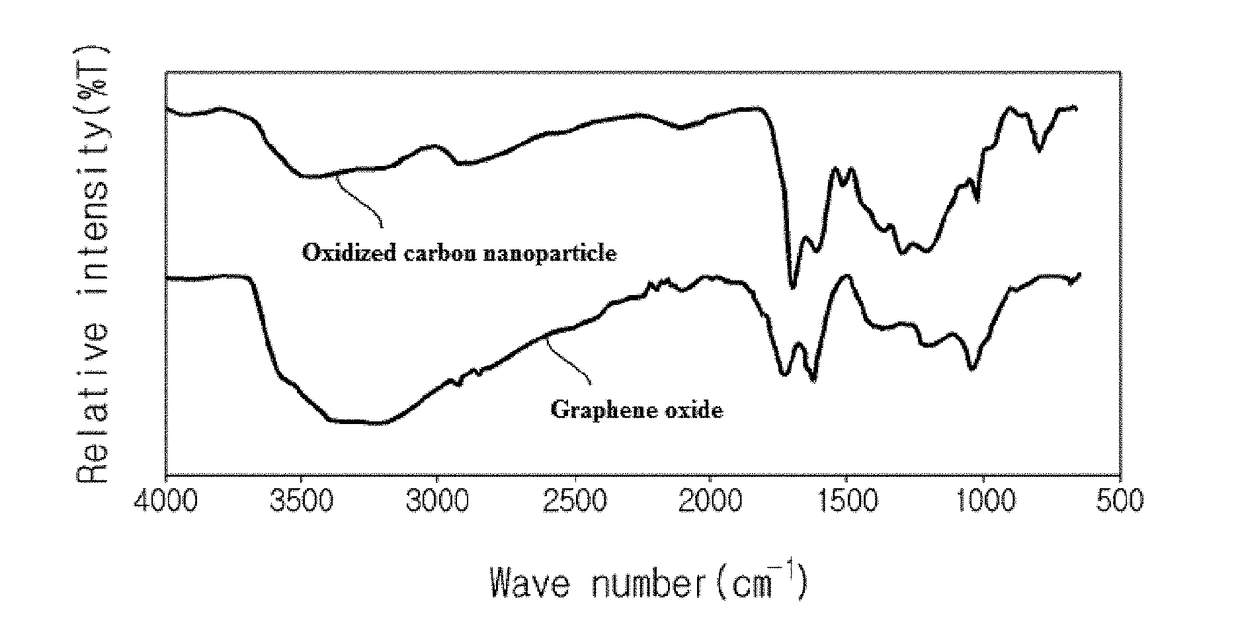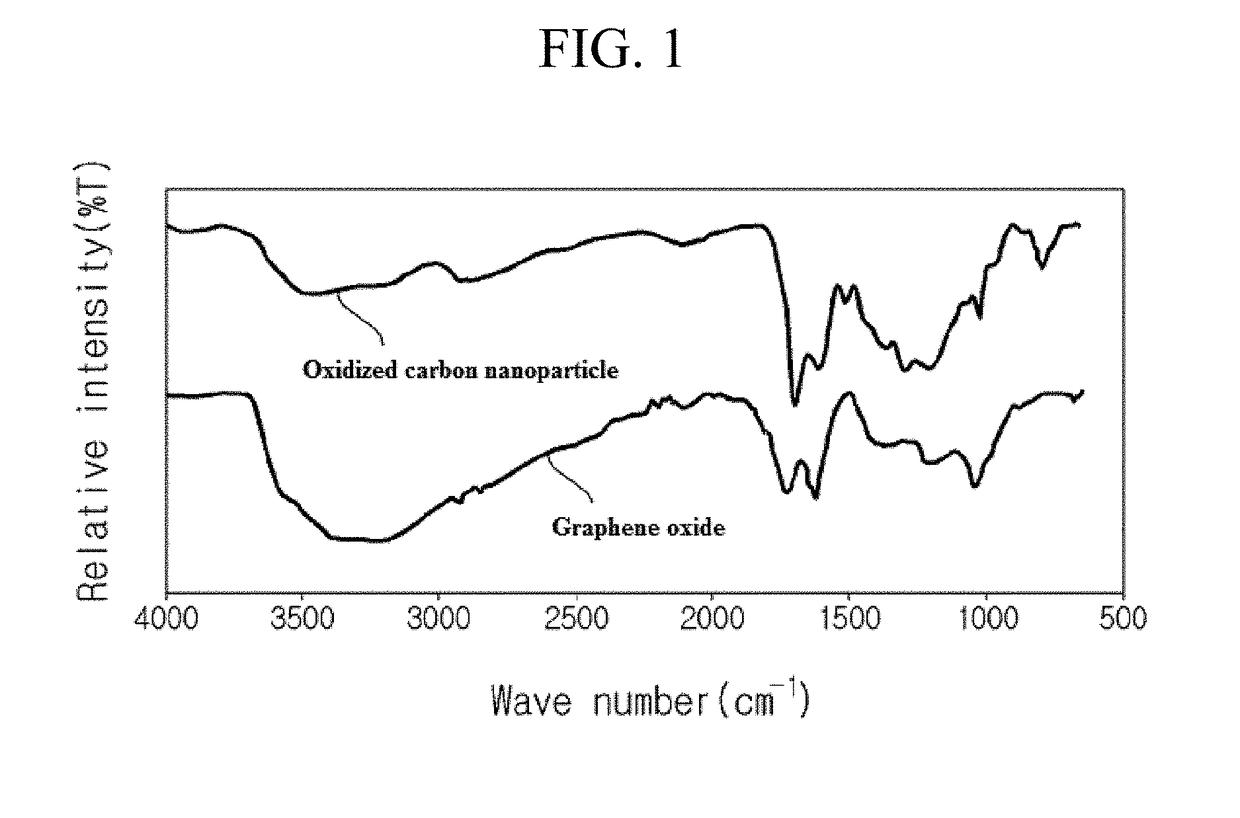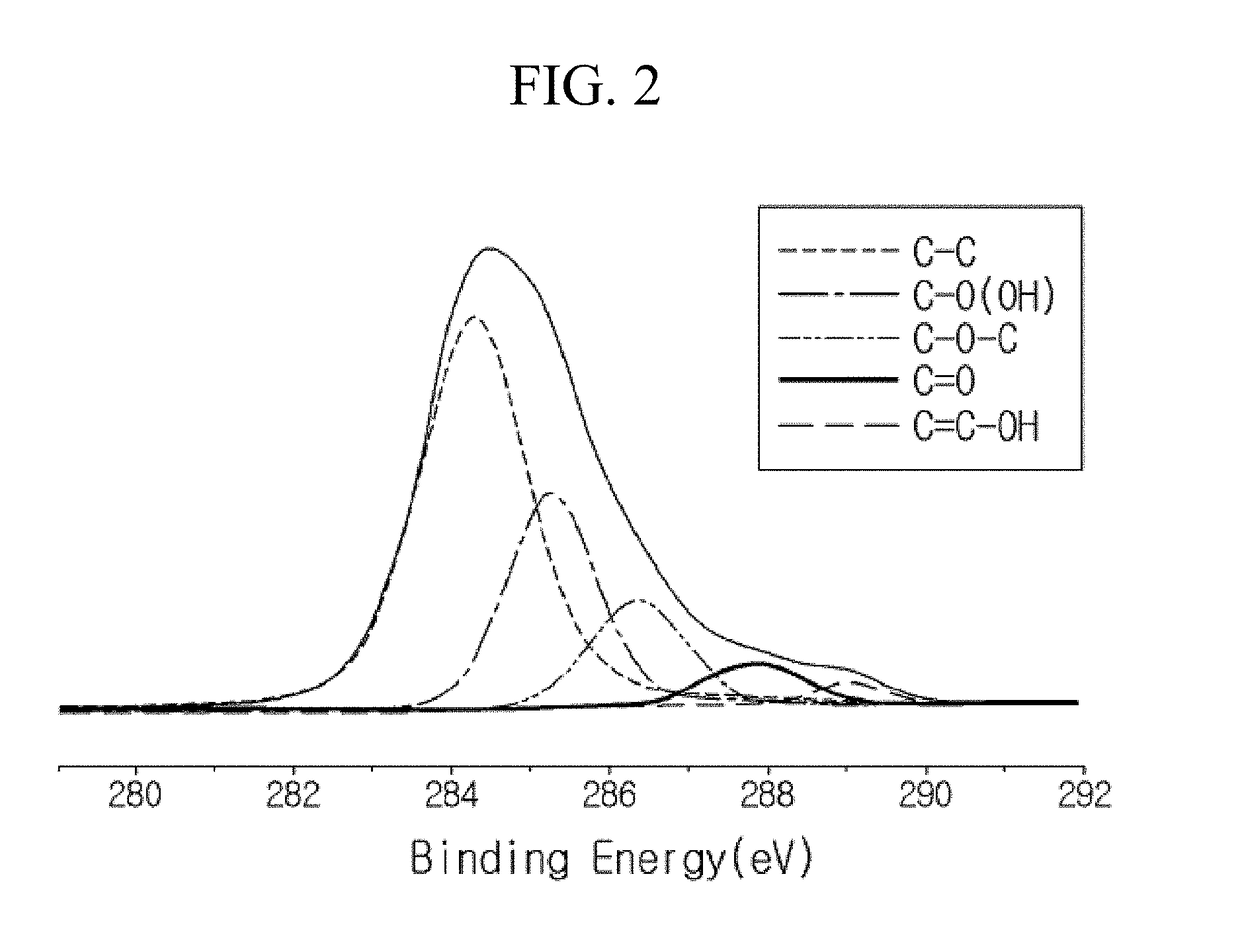Oxidized carbon nanoparticles, method for producing same, organic/inorganic composite comprising same, and method for producing organic/inorganic composite
- Summary
- Abstract
- Description
- Claims
- Application Information
AI Technical Summary
Benefits of technology
Problems solved by technology
Method used
Image
Examples
production examples
Production Example 1: Production of Oxidized Carbon Nanoparticle
[0069]Glucose was dissolved in an amount of 2.5 parts by weight with respect to 100 parts by weight of water. The raw material solution prepared as above was put into an airtight pressure container and heated to 80° C. Then ammonium chloride was added to the raw material solution in an amount of 0.001 parts by weight, the resultant mixture was heated to 160° C. at a rate of 2° C. per minute, and a reaction was performed thereon for 30 minutes. The water had a vapor pressure of 8 bar according to the heating temperature in the airtight pressure container.
[0070]After the completion of the reaction, a reaction solution was put into a centrifuge and was rotated at 5,000 rpm for 30 minutes to precipitate, separate, and clean oxidized carbon nanoparticles. This process was performed three times to vacuum-dry the oxidized carbon nanoparticles at 40° C., thereby obtaining a solid powder.
production example 2
c / Inorganic Composite
[0071]0.5 parts by weight of the oxidized carbon nanoparticles produced in Production Example 1 was sonicated for 60 minutes and dispersed in 100 parts by weight of an NMP solvent. Polyurethane (SONGSTOMER P-3175A) was added in an amount of 50 parts by weight with respect to 100 parts by weight of the solvent and was dissolved to prepare an organic / inorganic composite dispersion liquid in an invisible bright or dark brown colloidal state.
production example 3
c / Inorganic Composite Film
[0072]The organic / inorganic composite dispersion liquid prepared in Production Example 2 was put into a 5×5 cm2 Teflon mold and dried at 60° C. for 1 hour to produce an organic / inorganic composite film.
PUM
| Property | Measurement | Unit |
|---|---|---|
| Temperature | aaaaa | aaaaa |
| Temperature | aaaaa | aaaaa |
| Temperature | aaaaa | aaaaa |
Abstract
Description
Claims
Application Information
 Login to View More
Login to View More - R&D
- Intellectual Property
- Life Sciences
- Materials
- Tech Scout
- Unparalleled Data Quality
- Higher Quality Content
- 60% Fewer Hallucinations
Browse by: Latest US Patents, China's latest patents, Technical Efficacy Thesaurus, Application Domain, Technology Topic, Popular Technical Reports.
© 2025 PatSnap. All rights reserved.Legal|Privacy policy|Modern Slavery Act Transparency Statement|Sitemap|About US| Contact US: help@patsnap.com



